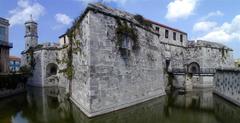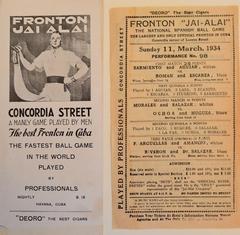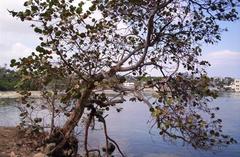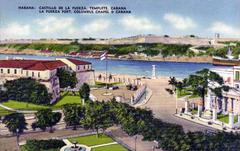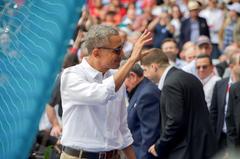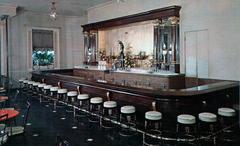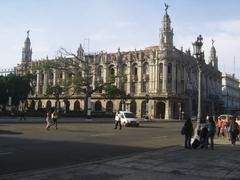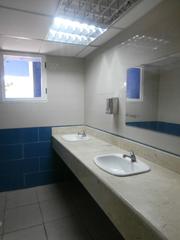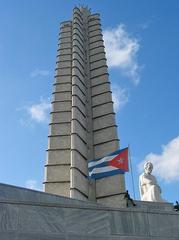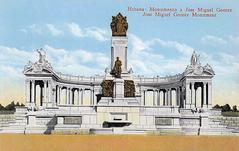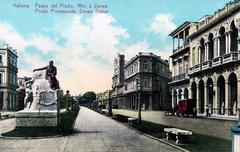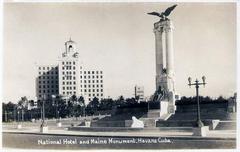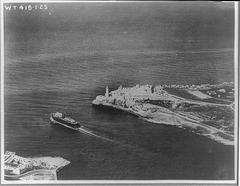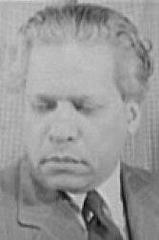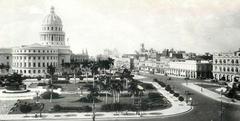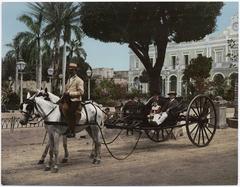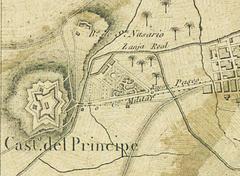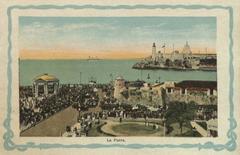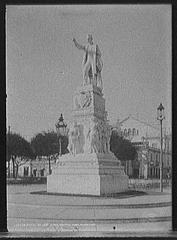
Royal Bank of Canada Building, Havana Province, Cuba: Visiting Hours, Tickets, and Historical Sites Guide
Date: 04/07/2025
Introduction
The Royal Bank of Canada (RBC) Building in Havana stands as an enduring symbol of Cuba’s early 20th-century economic growth, international connections, and architectural innovation. Serving as the headquarters for the largest Canadian bank in Cuba, the RBC Building not only facilitated critical financial transactions during the sugar industry boom, but also contributed to the cosmopolitan identity of the city. Its neoclassical and eclectic design, constructed in 1917 by architect Luis García Nattes and the engineering firm Purdy & Henderson, reflects the architectural renaissance that defined Havana during this era. Today, while the building’s interior remains largely inaccessible to the public, its elegant façade and central location in Old Havana make it an essential destination for visitors eager to explore the city’s rich heritage. This comprehensive guide covers the building’s history, architectural details, cultural significance, visitor information, accessibility, nearby attractions, and practical travel tips.
For in-depth research and further details, consult resources such as Havana Radio, OnCuba News, and the Havana Tourism official website.
Table of Contents
- Early Foundations and Expansion in Cuba
- Construction and Architectural Significance
- Economic and Social Impact
- Revolutionary Era and Nationalization
- Preservation and Legacy
- Cultural and Symbolic Importance
- Visitor Information
- Frequently Asked Questions (FAQ)
- Conclusion
Early Foundations and Expansion in Cuba
The Royal Bank of Canada, established in 1864 in Halifax, began expanding internationally in the late 19th century. Its first Caribbean branch opened in Bermuda in 1882; by 1899, RBC had a presence in Havana (Havana Radio). The bank’s entry into Cuba coincided with the island’s economic optimism following independence in 1902 and the subsequent surge in the sugar industry. Through conservative lending and strategic acquisitions—such as Banco de Oriente in Santiago de Cuba (1903) and Banco del Comercio de La Habana (1904)—RBC expanded rapidly, operating over 65 branches by the mid-1920s (Company Histories).
Construction and Architectural Significance
In 1917, RBC commissioned a new six-story headquarters in Havana, with Luis García Nattes as architect and the renowned Purdy & Henderson firm as engineers (Havana Radio). Purdy & Henderson’s influence is evident throughout Havana, notably in buildings like the National Capitol and Hotel Nacional (OnCuba News). The RBC Building features neoclassical and eclectic styles, a marble-clad façade, classical columns, and an imposing entrance. The ground floor housed a spacious, air-conditioned banking hall—a rarity at the time—while upper floors contained rental apartments and penthouses, reflecting the building’s mixed-use character.
Economic and Social Impact
RBC played a crucial role in supporting Cuba’s sugar industry, the backbone of the island’s economy in the early 20th century. By 1919, RBC operated 46 branches in Cuba, second only to the Banco Nacional de Cuba (ASCE Cuba Database). The bank’s presence helped channel international capital into Cuba, facilitating commercial and industrial growth. Its Havana headquarters became a symbol of economic power, modernity, and cosmopolitan aspiration, and contributed to the urban development of Old Havana, now a UNESCO World Heritage Site.
Revolutionary Era and Nationalization
The Cuban Revolution in 1959 transformed the nation’s financial landscape. Initially, RBC and the Bank of Nova Scotia were allowed to operate, but by December 1960, RBC’s assets were sold to Banco Nacional de Cuba (Company Histories). Despite these changes, the RBC Building retained much of its original architectural integrity and continued to function as a public civil structure (Havana Radio).
Preservation and Legacy
Today, the former Royal Bank of Canada building is recognized as a valuable example of early 20th-century Cuban architecture. Its essential features remain preserved, even after decades of limited use and modifications (Havana Radio). The building’s legacy is closely tied to the story of foreign investment, architectural innovation, and Havana’s transformation into a global city (OnCuba News).
Cultural and Symbolic Importance
Beyond finance and architecture, the RBC Building represents the complex interplay between Cuba and international powers in the early 20th century. It stands as a monument to pre-revolutionary prosperity, the rise of cosmopolitan Havana, and the resilience of Cuban heritage through changing times (Havana Radio).
Visitor Information
Visiting Hours
The Royal Bank of Canada Building is not open for regular public tours. Interior access is limited to special events or by prior arrangement; however, visitors can freely view and photograph the exterior at any time during daylight hours.
Tickets and Admission
There is no admission fee to view the building’s façade. For rare interior access during cultural events or exhibitions, ticketing information is provided by event organizers or local tourism offices.
Accessibility
The building is located in Old Havana, where cobblestone streets and uneven surfaces are common. While some accessibility features exist, visitors with mobility concerns should plan accordingly and consider guided tours that provide accommodations.
Guided Tours
Guided walking tours of Old Havana frequently include the RBC Building as a point of interest. These tours offer historical and architectural context and often cover other nearby landmarks. Book tours through reputable agencies or the Havana Tourism Office.
Nearby Attractions
- Lonja del Comercio: A historic commercial building.
- El Capitolio: The National Capitol Building.
- Plaza de San Francisco: A lively square with cafes and performances.
- Castillo de la Real Fuerza: A colonial fortress and maritime museum.
Travel Tips
- Wear comfortable walking shoes.
- Visit in the morning to avoid crowds and midday heat.
- Exterior photography is encouraged; ask permission for interiors during special events.
Frequently Asked Questions (FAQ)
Q: Can I enter the RBC Building?
A: Interior access is restricted. Occasional cultural events or guided tours may offer limited entry.
Q: Are guided tours available?
A: Many walking tours include the building in their itinerary.
Q: Is the building accessible for people with disabilities?
A: Accessibility is limited; check with tour providers for accommodations.
Q: Where can I get official information?
A: Visit the Havana Tourism Office for the latest updates.
Conclusion
Related Articles
Images


Summary and Recommendations
References and Further Reading
- Havana Radio article
- OnCuba News architectural overview
- Company Histories: The Royal Bank of Canada
- Cuba Business Report: The Steel Piglets of Havana Banking District
- Trek Zone: RBC Building Havana
- Wikipedia: Royal Bank of Canada Building, Havana
- Wikipedia: Canada–Cuba relations
- Havana Tourism Official Site
- UNESCO World Heritage Site: Old Havana





